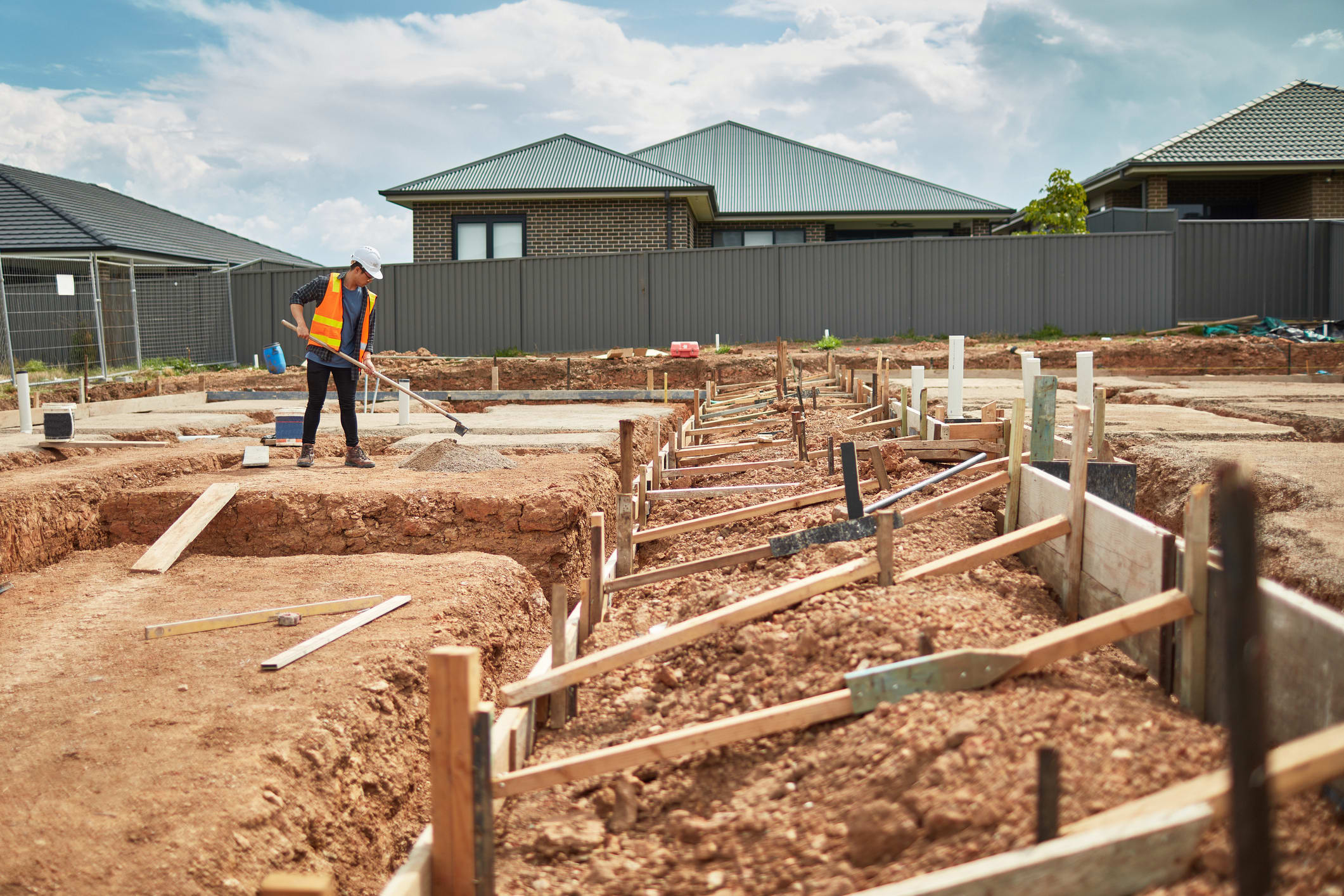As Australia’s plan to build 1.2 million new homes across the country over five years marks its first anniversary, there’s a lot more work to do to reach this ambitious goal.
Australia’s Housing Accord goal was started by the federal government and launched on 1 July 2024 to rapidly boost Australia’s property supply and build enough homes for the country’s growing population.
It’s a big ask for the country’s homebuilding industry, which has struggled in recent years amid higher building costs and a dip in buyer demand.
Governments have promised to spend huge sums of cash and slash red tape to supercharge homebuilding nationwide, but the early numbers have shown we are far from the 240,000 new homes needed to build each year to hit 1.2 million over five years.
There were 168,050 homes that started construction nationally in the 2024 calendar year, according to the latest Australian Bureau of Statistics data analysed by the Housing Industry Association.
HIA forecasts that 986,000 new homes will be delivered over the five years to 2028/29, reflecting a massive shortfall of more than 210,000 new homes.
One year into the Housing Accord and HIA managing director Jocelyn Martin said home builders were still facing the same barriers that have been holding the industry back for years.
Australia’s Housing Accord plans to deliver 1.2 million new homes nationwide over the five years to mid 2029. Picture: Getty
“Land supply remains constrained, planning systems are slow and complex, and the cost of delivering a new home continues to rise because of charges, taxes and red tape,” she said.
“Interest rates, skill shortages and material costs only add to these pressures.”
How we got here
Under the plan, federal, state and local governments have agreed to inject billions of dollars into home building and streamline planning and construction rules for home builders in order to reach the 1.2 million new home target by mid-2029.
Australians have been putting pressure on politicians to fix the country’s housing woes and make housing more affordable, especially for first-home buyers.
Some 168,050 homes started construction nationally in the 2024 calendar year. Picture: Getty
It comes as homebuyers have watched home prices continue to rise in most markets despite higher-than-normal interest rates, with the country’s median home price 4.6% higher in June than a year ago, according to PropTrack.
In places like Adelaide, Brisbane and Perth, home prices have soared more than 88% over the past five years.
Meanwhile, renters have seen weekly rents continue to grow far and wide, with the latest data showing the national median rent growing 5% during the March 2025 quarter compared to the same time last year.
Rental price growth has slowed down considerably from the peak levels seen over 2022 and 2023, but it’s still ticking higher across many parts of the country.
The hope has been that accelerating home building would provide enough homes for Australia’s growing population, which would slow down rising housing costs.
Silver linings
Despite the predicted shortfall, there have been some small wins to come out of the housing target.
Property Council chief executive Mike Zorbas said the five-year national housing target was already a success on two fronts.
“Recent widespread state planning reforms have only happened because the targets and incentives exist, and boosting housing supply is now ‘top of mind’ for all Australians,” Mr Zorbas said.
A new federal government-backed apprentice program kicked off in July, promising to give new home building apprentices $10,000 over three years. Picture: Getty
He said the current situation could have been even worse without the reforms and incentives introduced as a result of the plan.
Mr Zorbas noted the target will also help Australians understand which states delivered enough homes by 2029 and how they did it.
But he acknowledged more needs to be done on planning reform, attracting more workers into the home building industry, construction productivity, and foreign investment tax reform.
It comes as a new federal government-backed apprentice program kicked off on 1 July, promising to give new home building apprentices $10,000 over three years.
Australia needs to build 240,000 new homes a year to reach its 1.2 million target by mid 2029. Picture: Getty
While the cash incentive will be welcomed by the industry, it alone won’t be enough to close the gap between the number of homes starting construction and where they need to be.
But the housing industry remains hopeful that there is still time to turn things around and boost the number of homes being built over the remaining four years of the accord.
“Australians now need governments to clear the obstacles that prevent homes being built,” Ms Martin said.
“The next 12 months must be about removing barriers to delivery.”

No responses yet